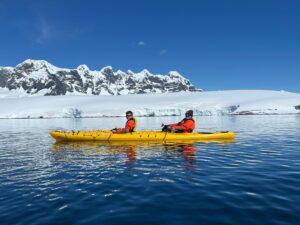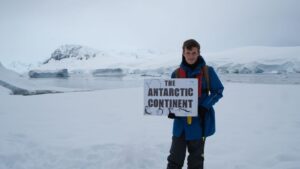When I first enrolled for this study abroad, I knew it would be vastly different from any course I have previously taken. As a senior in electrical engineering, my semester schedules typically only consist of engineering classes. When I saw this opportunity on the abroad portal, I immediately knew I wanted to participate in the program. Not only is Antarctica such an amazing place, this gave me the opportunity to focus on another extremely important topic not related to any of my classes.
Sustainability is extremely important, yet it is often overlooked for numerous reasons, such as the cost or complexity of a sustainable solution. However, it is crucial to make an effort to be more sustainable, as we only have a limited number of resources available on the planet. We should work to conserve what we have, rather than waste our current resources to save a few dollars. This was one of my biggest goals coming out of this program. I hoped to combine what I learn from this program with my studies in electrical engineering. One of the biggest complexities faced is how to generate large amounts of energy while still being sustainable. From this course, I learned that there really isn’t one solution with the currently-available techniques. Fossil fuels are stable, but generate large amounts of pollution. Solar generates clean, but unstable energy, while requiring panels manufactured with harmful materials. Wind also generates clean power, but windmills pose a threat to birds in the area. Lastly, nuclear generates clean and stable power, but waste disposal is an issue that typically affects less-privileged areas that do not have the resources to fight back. However, by combining these energy sources, a more sustainable grid can be created by using renewable energy to supplement fossil fuels. By doing this, the load sustained by fossil fuel generators is reduced, lessening the amount of fuel burned and pollution generated.
This is particularly important problem in Antarctica. This is one of the most preserved environments on the planet, yet it is suffering the most from current practices. The continent is rapidly warming, resulting in less and less ice each year. In fact, during one day on our voyage, a temperature of 18 degrees Celsius was recorded, nearly breaking the record of 18.3 degrees. The wildlife present relies on the snow and ice. If this were to melt in large amounts, there would be significant damage to the wildlife populations. However, despite current efforts, it is still not enough. At the President Gabriel Gonzalez Videla base, belonging to Chile, they mentioned that they had attempted to install solar, but it was denied by the Chilean government. As a result, they had to resort to diesel generators. At the McMurdo station, more progress is made, as they use wind turbines to supplement the diesel generators. Although it does not completely remove the reliance on diesel, it does significantly help. Additionally, the heat generated by the engines is reused to heat the base to help with energy efficiency.
The biggest thing I learned from the program was how much of an impact our actions have on the planet. As a citizen of the US, I take electricity for granted. When I plug something in or turn on a light, I just expect it to work. I do not really think about how that electricity was generated or the impact it has on the planet. I did not even consider how this affects a continent over 6,500 miles away. However, as a result of the program, I learned just how important sustainable development is, and what can be done to create a more sustainable future. Later in my career, I hope to be able to make the changes we learned about in order to reduce the negative impact that we have on the planet. Although a 100% clean solution may never be developed, steps can be taken to maximize the efficiency of circuits, minimizing the energy required, and therefore pollution generated.



